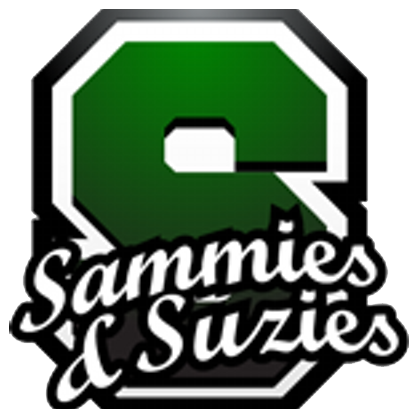Grade 3
Grade 3 Standards |
LANGUAGE ARTS |
Language |
Determines the meaning of vocabulary words using context clues/dictionary |
Recognizes that words are made up of parts (roots, prefix, suffix) and can identify those parts |
Identifies and applies the meaning of the terms antonyms, synonyms and homophones |
Identifies and uses 4 main parts of speech (noun, verb, adjective, adverb) |
Reading/Literature |
Uses letter/sound knowledge to decode written English |
· Reads grade level text with fluency, accuracy, appropriate pacing and expression |
Locates and summarizes the main idea and supporting details in various texts |
Identifies speaker in a text |
Identifies story elements (plot, characters, setting, theme, dialogue) |
Makes judgments about elements from text and supports with evidence from text (cause/effect, fact/opinion) |
Identifies characteristics of various genres (fiction, nonfiction, poetry, drama) |
Composition |
· Uses main ideas and details to create paragraphs |
Uses organizational tools to formulate ideas |
· Composes pieces that clearly communicate ideas for different purposes with beginning, middle and ending |
· Edits/revises drafts of writing |
Conventions |
Developing cursive writing |
Uses end punctuation accurately |
Capitalizes accurately (beginning of sentence, proper nouns) |
Identifies, uses and correctly formats complete sentences |
Applies letter/sound knowledge when spelling in everyday writing |
SOCIAL STUDIES |
Uses titles, directions, legends and scales to locate places on various maps |
Identifies and locates New England States, major cities and towns and landmarks in Massachusetts |
Identifies historical sites and important events of Sutton and Massachusetts |
Explains the necessities and influences of local government |
Explains the definition and purpose of a tax |
Defines the barter system |
Compares and contrasts the beliefs, motivations and ways of life of the Wampanoag, Pilgrims and Puritans |
Explains the importance of events surrounding the American Revolution |
Recognizes the importance of the Declaration of Independence, the Constitution and the Bill of Rights |
Reads biographies and identifies contributions of famous people in the fields of science, art, business and politics |
SCIENCE |
Recognizes and understands the properties of soil |
Understands and describes phases of the water cycle |
Demonstrates basic understanding of plants: structure, life cycle and photosynthesis |
Demonstrates an understanding of basic properties of magnets |
Demonstrates an understanding of basic properties of sound |
Identifies and understands usage of basic tools |
Makes observations, records and interprets data |
Understands and applies the engineering design process |
MATHEMATICS |
Numeration/Operations |
Demonstrates knowledge of addition facts using addends 0-10 |
Demonstrates knowledge of related subtraction facts |
Uses basic facts to solve related problems |
Identifies and names place value in numbers to hundred thousands |
Orders and compares whole numbers to hundred thousands |
Adds multi-digit numbers to thousands using algorithms |
Subtracts multi-digit numbers to thousands using algorithms |
Uses estimation to add/subtract |
Demonstrates knowledge of multiplication facts using factors 0-10 |
· Demonstrates awareness of related division facts |
· Demonstrates understanding of fractions as part of a whole (numerator and denominator) |
Patterns, Functions, and Algebra |
Counts in patterns (i.e. by 2s, 5s, 10s, 100s, 1000s) |
Identifies and continues patterns in multiples of 10, 100, 1000 when given a starting point |
Uses symbols +,-,<,>,= to compare mathematical relationships using whole numbers |
Uses symbols x,÷,<,>,= to compare mathematical relationships using whole numbers |
Geometry |
Identifies and names two-dimensional shapes |
Identifies and names three-dimensional shapes |
Identifies symmetric figures and draws lines of symmetry of two-dimensional shapes |
Identifies and draws intersecting, parallel, and perpendicular lines |
Measurement |
Measures to the nearest 1/2 inch and centimeter |
Identifies U.S. customary and metric units of weight |
Estimates and compares weight |
Calculates area and perimeter of rectangles |
Determines time to the nearest minute |
Computes elapsed time |
Identifies coin equivalencies and makes money exchanges |
Uses a thermometer and the Fahrenheit temperature scale |
Data Analysis, Statistics, and Probability |
· Reads tables, graphs and maps |
· Uses data in problem solving |
· Collects, summarizes and interprets data |
PHYSICAL EDUCATION |
Demonstrates competency in a variety of locomotor and non-locomotor skills as an individual or in a team setting |
Demonstrates responsible personal and social conduct used in physical activity settings. |
Shows understanding of game concepts and strategies |
Demonstrates coordination through physical activities |
Performs exercise and physical fitness activities |
Identifies behaviors that contribute to wellness |
ART |
Demonstrates and understands elements and principles of design including line, shape, form, texture, space, pattern and symmetry |
Explores and experiments with color and is able to identify primary, secondary, tints and shades on color wheel |
Creates artwork that is of presentation quality and recognizes craftsmanship |
Recognizes and Identifies important artists and their style |
Creates 2D and 3D artwork from observation |
MUSIC |
Sings in tune |
Sings using appropriate techniques for sound production |
Plays recorder with steady beat, correct rhythm and fingering |
Plays recorder using appropriate techniques for sound production |
Reads standard symbols of notation, rhythm and pitch |
COMPUTERS |
Uses tools appropriately and independently |
Uses digital media to communicate and work collaboratively |
Locates, organizes and evaluates information from a variety of digital resources and media |
Practices safe and responsible use of technology |
Transfers current knowledge to learning of new technology |
